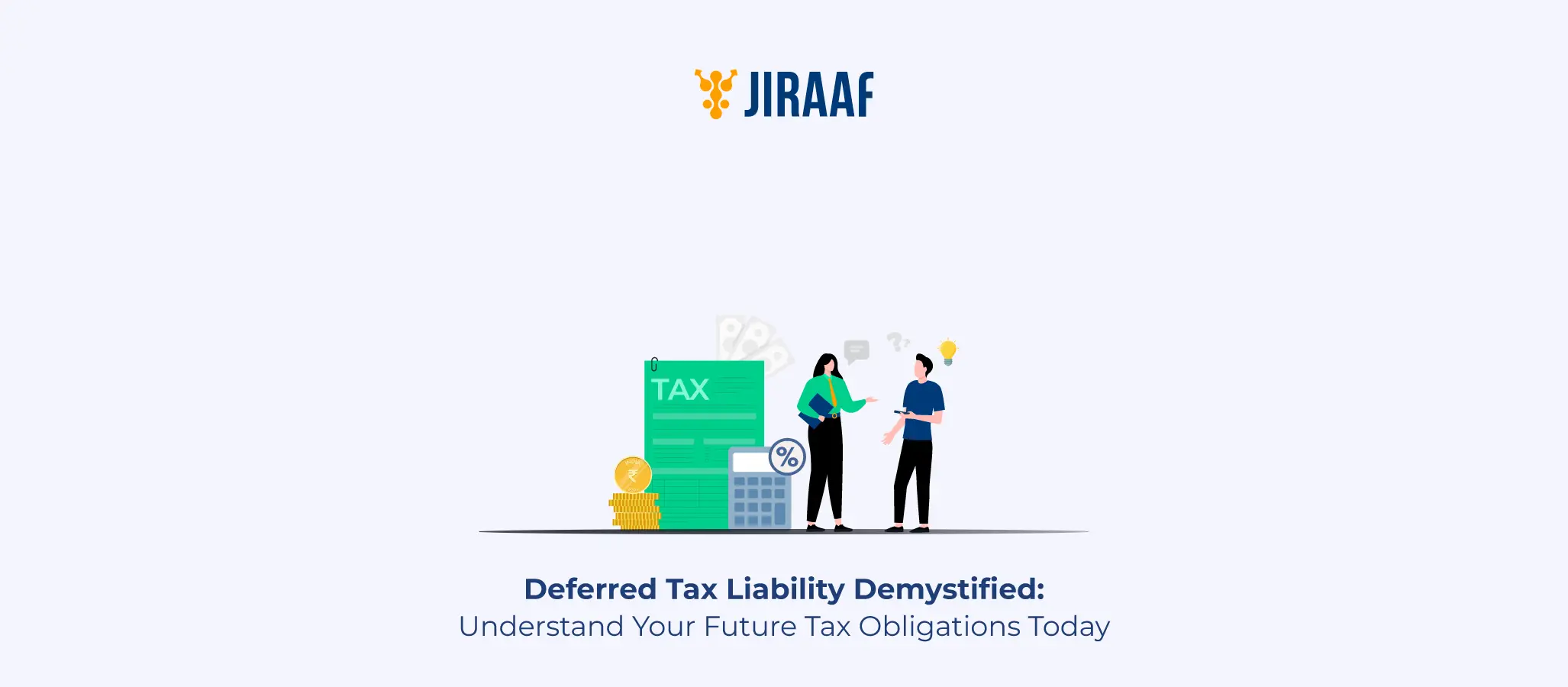Nearly 70% of salaried individuals in India leverage the 80C deduction every year, yet most only scratch the surface of its potential. In 2025, the available 80C tax benefit remains a powerful tool to structure your finances efficiently if you use it strategically.
Despite being one of the most well-known sections under the Income Tax Act, 80C is often underutilized or misaligned with broader financial goals. Too many people rush to invest at the last minute, often in traditional instruments, without considering how each option fits into their long-term plan. If you are in the process of optimizing your portfolio, understanding the nuances of this section can help you make sharper financial decisions and potentially cut down on your taxes, too.
In this guide, we’ll unpack the full range of options available under Section 80C for 2025, evaluate their benefits and trade-offs, and help you align them with your financial strategy, not just your tax-saving needs.
What is Section 80C of the Income Tax Act?
Section 80C of the Income Tax Act allows individual taxpayers and Hindu Undivided Families (HUFs) to reduce their taxable income by making specific investments or payments. It covers a curated list of eligible avenues that not only secure your future but also offer an immediate exemption under 80C, creating an efficient bridge between long-term planning and current-year tax relief.
Practically, Section 80C is less about ticking boxes and more about integrating the right tax-saving tools with your investment goals, whether that means liquidity, returns, or asset class exposure. While many investors know what Section 80C broadly entails, the real edge lies in aligning it to your tax-avoidance strategy.
Eligibility for Claiming 80C Deduction
Yes, deductions under section 80C are available to individual taxpayers and Hindu Undivided Families (HUFs). This means that if you’re a salaried professional, self-employed individual, or a member of a family-run business structure, you are eligible to claim benefits under Section 80C, provided your investments or payments align with the approved list.
Non-resident Indians can also claim certain 80C tax benefits, such as ELSS or life insurance premiums, as long as the instruments comply with Indian tax laws.
What is the Maximum Deduction Limit Under 80C?
The maximum deduction under Section 80C remains at ₹1.5 lakh per financial year for 2025, unchanged for several years. However, its strategic use has evolved.
Identifying the most efficient mix within that ₹1.5 lakh limit (based on your liquidity needs, risk appetite, and financial goals) is key to effective tax planning. While the deduction cap is static, the flexibility within it offers plenty of room for intelligent tax optimization.
Note that this ₹1.5 lakh ceiling includes the combined value of all qualifying investments or expenses under Section 80C, so planning your allocations upfront is crucial to avoid duplication or waste.
Complete List of Tax-Saving Options Under Section 80C
Here are the core instruments to which the 80C deduction applies, each offering distinct features and strategic benefits.
ELSS: Equity Linked Saving Scheme
ELSS offers market-linked returns and the shortest lock-in among all 80C options, with just three years of tenure. If you have an appetite for equity exposure, it’s a tax-efficient gateway to long-term capital growth.
The deduction under 80C for ELSS investments can go up to ₹1.5 lakh, and since returns are market-driven, it has the potential to outperform other fixed-income options. Ensure your fund selection aligns with your risk-reward expectations.
PPF: Public Provident Fund
A classic option under Section 80C, PPF remains relevant due to its EEE status: exempt on investment, interest earned, and maturity proceeds. It suits investors focused on stability and tax efficiency over a 15-year horizon. Current interest rates vary, but it comes with sovereign backing, making it a low-risk pillar in your 80C portfolio.
Life Insurance Premiums
Premiums paid for life insurance policies (for self, spouse, or children) qualify for tax deduction under 80C. This includes both term and endowment plans, as long as the annual premium is within 10% of the sum assured. From a portfolio standpoint, it’s important that you distinguish between investment and insurance. Life insurance policies are to be treated as a protection-based instrument, allowing you to claim the 80C tax benefit in parallel.
Tax-saving Fixed Deposits
5-year tax-saving fixed deposits offered by banks are eligible for deduction under 80C. The returns are fixed, but the interest earned is taxable, which has a slight impact on the post-tax yield. For example, if you invest ₹1 lakh in a tax-saving FD with a 7% interest rate, you would earn ₹7,000 in interest. If you fall into the 30% tax bracket, you would pay ₹2,100 in tax. This reduces your post-tax return to 4.9%.
For investors seeking predictability and low volatility in their tax-saving mix, these FDs act as a stable component. They are locked in for five years without premature withdrawal.
EPF and VPF Contributions
For salaried individuals, contributions to EPF are auto-eligible, and voluntary contributions (VPF) beyond the statutory 12% also qualify for the 80C tax benefit. Given the steady interest rate and compounding effect, EPF/VPF form a powerful foundation of long-term savings, especially when aligned with retirement planning.
NSC: National Savings Certificate
NSCs offer you fixed returns with a five-year tenure and are backed by the government, making them a secure debt instrument eligible for tax benefits under Section 80C. The interest earned each year on NSCs is reinvested and also qualifies for rebate under 80C until maturity, when the final payout becomes taxable. This makes NSC a smart option for debt exposure with reinvestment benefits.
Home Loan Principal Repayment
Repayment of the principal component of your home loan EMIs is eligible for deduction under 80C, making your real estate investments more tax-efficient. This applies to loans taken for residential property, and the benefit is available only after construction is complete. When paired with interest deduction under Section 24(b), the overall tax relief from home loans becomes significantly rewarding.
Tuition Fees for Children
Tuition fees paid for up to two children’s education (at school, college, or university in India) are eligible for deduction under 80C, provided they’re paid to a recognized institution (by a Central, State, or Union Territory educational authority or any other authorized educational body in India). This is one of the few expense-based exemptions under 80C and allows you to align family responsibilities with tax-saving goals. Coaching classes and foreign education do not qualify.
SSY: Sukanya Samriddhi Yojana
Contributions to the Sukanya Samriddhi Yojana, a government-backed savings scheme for girl children, are eligible for deduction under 80C. It offers investors attractive interest rates and tax benefits, making it a popular choice among parents.
Now that we have seen the list of exemptions available under section 80C, let’s discuss some things not covered under it.
What is Not Covered Under 80C?
Several financial instruments and expenses that may seem eligible at first glance are excluded from deduction under 80C. Notably:
- Stamp duty and registration charges are not standalone 80C claims but may be eligible under specific conditions related to home purchase
- Health insurance premiums fall under Section 80D, not 80C
- Investments in shares, mutual funds (except ELSS), or gold are not eligible unless specifically listed
- Pension plans, unless under specific eligible products like certain annuity-linked ULIPs, don’t automatically fall under 80C
It is important to note that distinguishing between “good for your portfolio” and “good for 80C” is critical for your strategy, since not all strategic investments bring tax rebates under this section.
Recent Legislative Update
The Income Tax Bill 2025 restructures Section 80C deductions by moving them to Clause 123, effective April 1, 2026. This reform aims to simplify tax regulations and enhance taxpayer understanding by consolidating eligible deductions into a more organized framework. The overall deduction limit of ₹1.5 lakh remains unchanged, but the restructuring improves clarity and accessibility for taxpayers.
Final Thoughts: Maximize Your Tax Savings with Smart 80C Planning
Section 80C is often the starting point for most taxpayers when it comes to reducing their tax liability, and for good reason. It offers taxpayers a wide range of deductions across familiar instruments, many of which also serve core financial needs like retirement, education, or home ownership.
That being said, simply exhausting the ₹1.5 lakh limit shouldn’t be your only objective of utilizing section 80C. Choosing the right mix of options based on your time horizon, risk profile, and existing commitments can make this section work more efficiently for you. By taking a little more time to align your 80C investments with your broader financial goals, you can turn a basic tax-saving step into a more purposeful part of your financial planning.
Discover fixed income investments with Jiraaf, a SEBI registered online bonds platform that educates and brings access to a wide array of bonds. Sign up today to explore diversified fixed income investment opportunities to support your goal-based wealth creation journey. Start investing!




